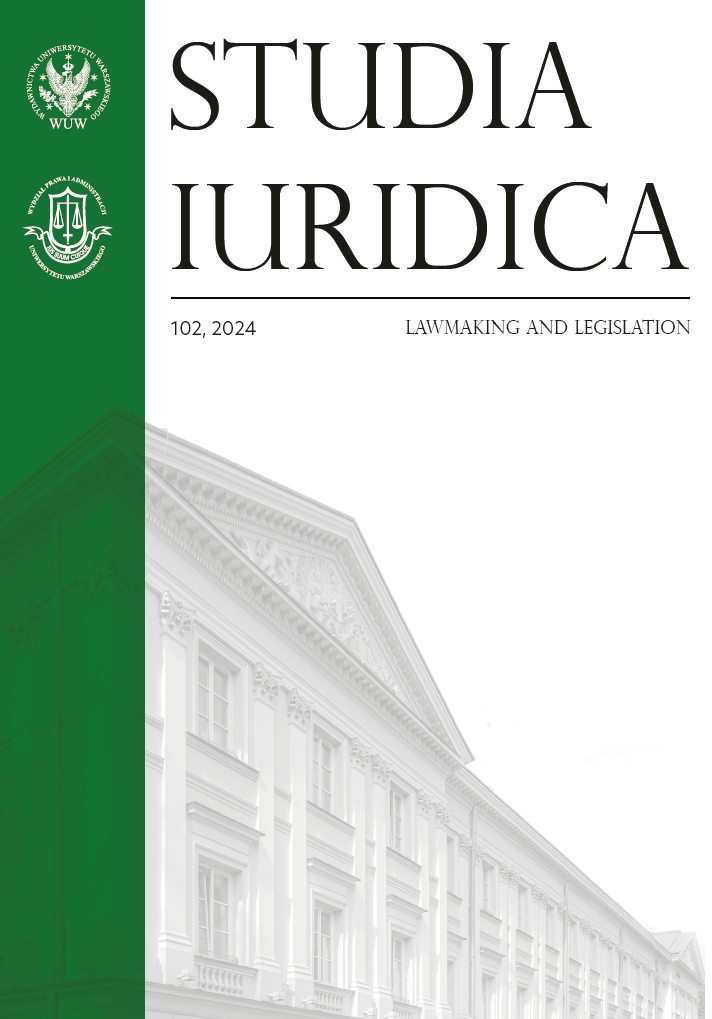POWERS OF THE NATIONAL REVENUE ADMINISTRATION WITH REGARD TO TEMPORARY ATTACHMENT OF MOVABLE PROPERTY: LEGISLATIVE ASPECTS
POWERS OF THE NATIONAL REVENUE ADMINISTRATION WITH REGARD TO TEMPORARY ATTACHMENT OF MOVABLE PROPERTY: LEGISLATIVE ASPECTS
Author(s): Miłosz KłosowiakSubject(s): Administrative Law
Published by: Wydawnictwa Uniwersytetu Warszawskiego
Keywords: administrative enforcement; customs and tax inspection; National Revenue Administration; temporary seizure; attachment of movable property; obligor
Summary/Abstract: The amendment of the Act on the National Revenue Administration, in force since 1 January 2022, gave officers the right to temporary seizure of movable property. As a part of the ‘Polish Deal’, amendments were made to the Act of 16 November 2016 on the National Revenue Administration and added in Section V Chapter 1c ‘Temporary attachment of movable property’, as well as Chapter 5a ‘Approval of temporary attachment of movable property’ was added in Section II of the Act of 17 June 1966 on Enforcement Proceedings in Administration. Under these changes, from the beginning of 2022, movable property may be temporarily attached by an officer who conducts customs and tax inspection. Seized movable property may include, for example, machines, computers, raw materials and means of transport. An authority may temporarily seize movable property even before the end of the customs and tax inspection. The new regulations are aimed at increasing the efficiency of public debt collection. The change in the regulations resulted from the recognition of the existing legal regulations as defective, i.a. due to the difficulty in searching for the debtor’s assets. The aim of this paper is to assess the legislative correctness and operation of the construct of temporary attachment of movable property. The following problems have been identified: (1) whether the legislator has indicated the criteria for assessing if in a given situation temporary attachment will increase the efficiency of enforcement; (2) whether the legislator has included a definition of the term ‘efficiency’ in the discussed provision; (3) whether a tax and customs officer is obliged to temporarily attach movable property or whether it may not be seized despite the conditions being met; (4) whether the provisions establishing temporary attachment of movable property lay down rules for estimating the value of the seized movable property. A formal and dogmatic method has been used to carry out the above analysis. This method involves a linguistic and logical analysis of legal texts. In response to the questions posed, it has been established that the legislator did not indicate the criteria according to which it would be assessed whether in a given situation temporary attachment would increase the efficiency of enforcement. Nor did the legislator define the concept of ‘efficiency’. Interpretative doubts have also been raised as to whether the officer is obliged to temporarily seize movable property or whether it may not be attached despite the conditions being met. In addition, the provisions establishing temporary attachment of movable property do not lay down rules for estimating the movable property value.
Journal: Studia Iuridica
- Issue Year: 2024
- Issue No: 102
- Page Range: 95-108
- Page Count: 14
- Language: English

